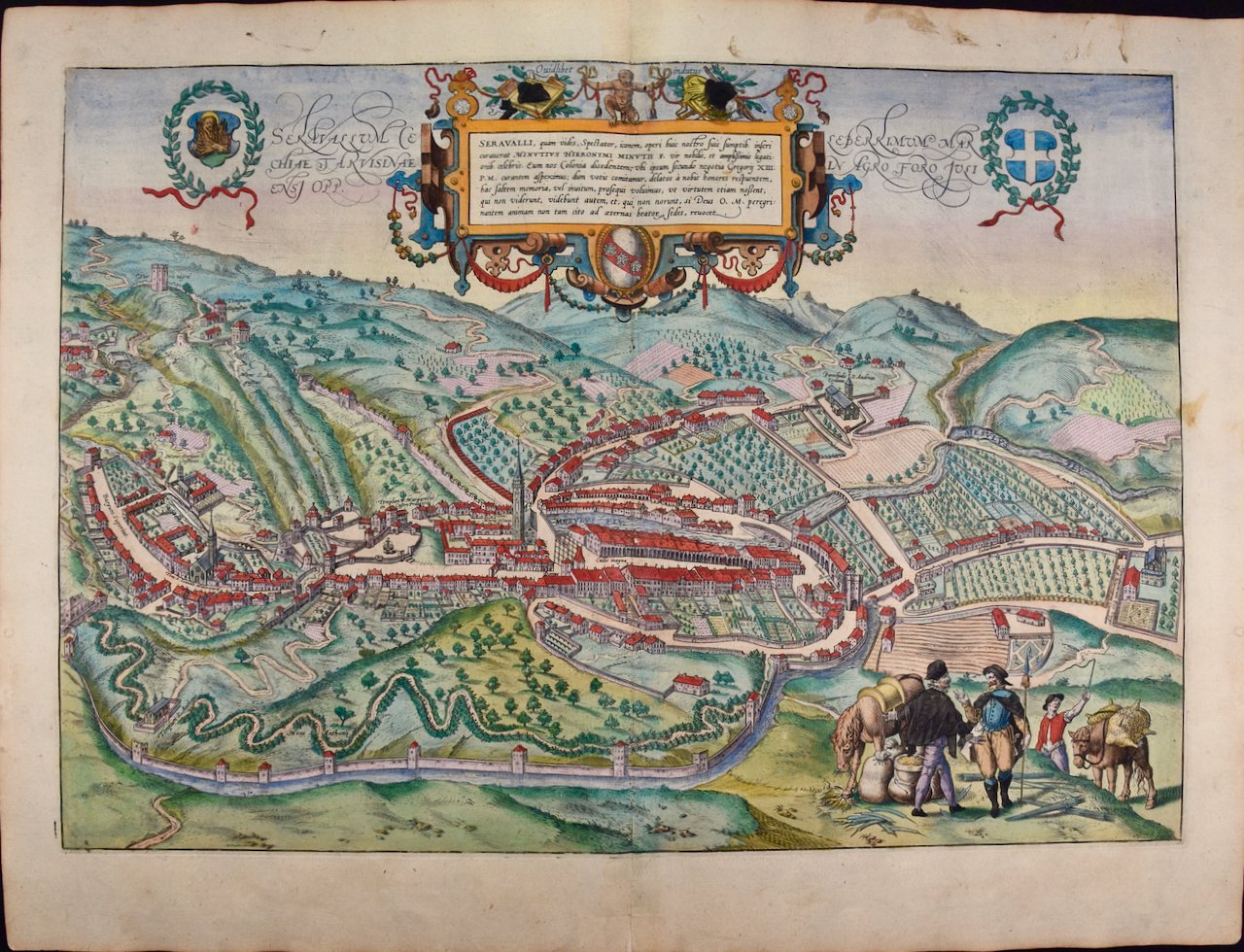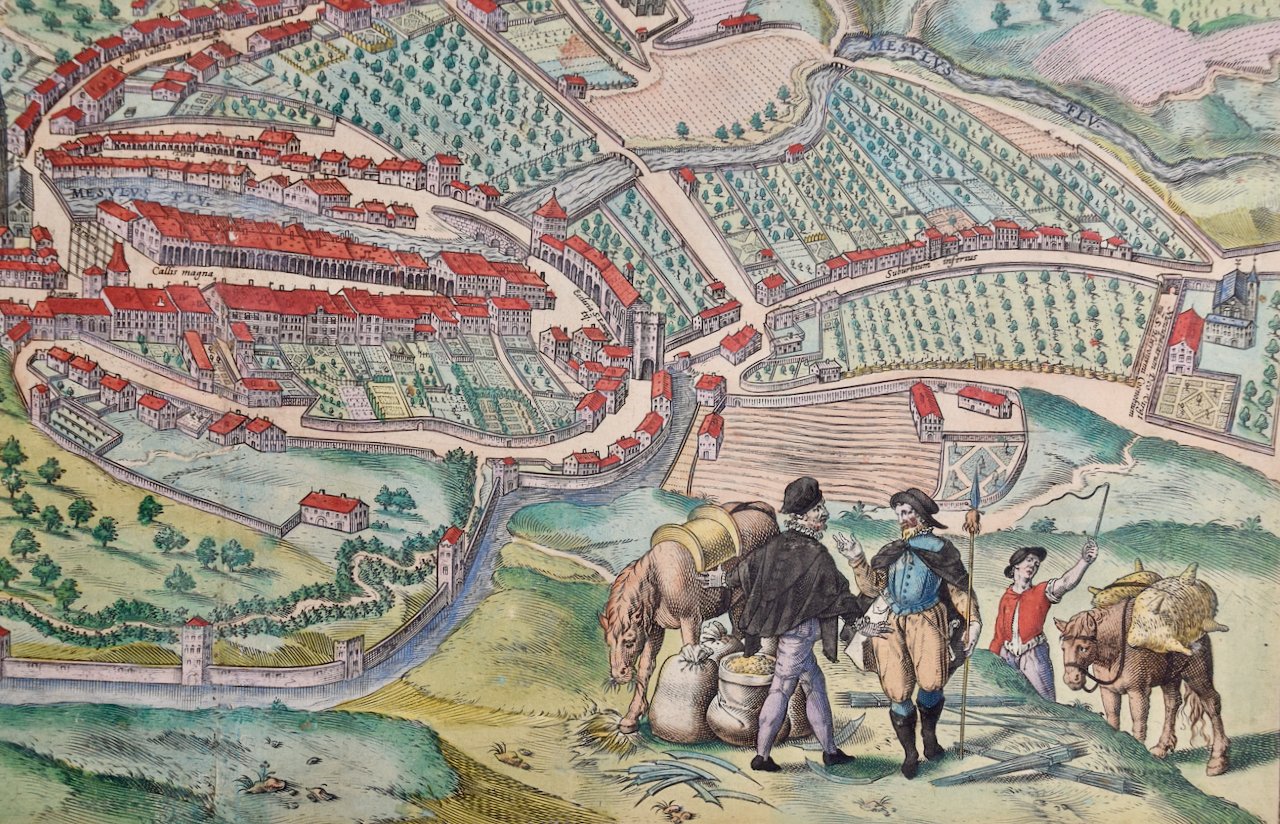China: An Original 18th Century Hand-colored Map by E. Bowen
This is an original 18th century hand-colored map entitled "A New & Accurate Map of China, Drawn from Surveys made by the Jesuit Missionaries, by order of the Emperor. The whole being regulated by numerous astronomical observations" by Emanuel Bowen. It was published in 1744 in London in John Harris's "Navigantium atque Itinerantium Bibliotheca" or "A Complete Collection of Voyages and Travels". This highly detailed and colorful map depicts China, Korea, Taiwan (Formosa), the Yangtze and Yellow Rivers, the great cities of China and a portion of Mongolia in the north and Southeast Asia in the south.
Creator: Emanuel Bowen (1694 - 1767, British)
Creation Year: 1744
Dimensions: Height: 15.75 in (40.01 cm) Width: 19.75 in (50.17 cm)
Medium: Engraving
Condition: See description below.
Reference #: 4983
This is an original 18th century hand-colored map entitled "A New & Accurate Map of China, Drawn from Surveys made by the Jesuit Missionaries, by order of the Emperor. The whole being regulated by numerous astronomical observations" by Emanuel Bowen. It was published in 1744 in London in John Harris's "Navigantium atque Itinerantium Bibliotheca" or "A Complete Collection of Voyages and Travels". This highly detailed and colorful map depicts China, Korea, Taiwan (Formosa), the Yangtze and Yellow Rivers, the great cities of China and a portion of Mongolia in the north and Southeast Asia in the south.
Creator: Emanuel Bowen (1694 - 1767, British)
Creation Year: 1744
Dimensions: Height: 15.75 in (40.01 cm) Width: 19.75 in (50.17 cm)
Medium: Engraving
Condition: See description below.
Reference #: 4983
This is an original 18th century hand-colored map entitled "A New & Accurate Map of China, Drawn from Surveys made by the Jesuit Missionaries, by order of the Emperor. The whole being regulated by numerous astronomical observations" by Emanuel Bowen. It was published in 1744 in London in John Harris's "Navigantium atque Itinerantium Bibliotheca" or "A Complete Collection of Voyages and Travels". This highly detailed and colorful map depicts China, Korea, Taiwan (Formosa), the Yangtze and Yellow Rivers, the great cities of China and a portion of Mongolia in the north and Southeast Asia in the south.
Creator: Emanuel Bowen (1694 - 1767, British)
Creation Year: 1744
Dimensions: Height: 15.75 in (40.01 cm) Width: 19.75 in (50.17 cm)
Medium: Engraving
Condition: See description below.
Reference #: 4983
The map is embellished with a Compass Rose in the lower right and an elaborate decorative title and distance scale cartouche in the lower left, which depicts Chinese architecture, pottery, a landscape with farm animals and a salesman sitting on the ground showing his wares to a standing wealthy appearing customer. Text in the upper left describes Jesuit surveys of China in the early 18th century.
This striking and beautifully hand-colored original 18th century map is printed on laid chain-linked paper with wide margins. The sheet measures 15.75" high and 19.75" wide. There is a vertical center fold, as issued. There are two tiny edge chips about the lower right corner. The map is otherwise in very good to excellent condition.
Emanuel Bowen (1694-1767) was a prominent British engraver and cartographer. He was born in Wales and worked in London as a mapmaker and engraver for much of his career. Bowen was honored as a fellow of the Royal Society and as the Royal Mapmaker to both to King George II of England and Louis XV of France. Based in London, Bowen was highly regarded for producing some of the largest, most detailed, most accurate and most attractive maps of his era. He is known to have worked with some of the most prominent cartographic names of the period including Herman Moll, John Owen, and Thomas Kitchin. Bowen was known for his skill in combining information from various sources to create comprehensive and useful maps. Bowen produced a wide range of maps, including maps of the British Isles, Europe, North America, Africa, and Asia. He also created maps for several important atlases, including the "Complete Atlas" (1752) and "A Complete System of Geography" (1747). Despite his renown and success, Bowen, like many cartographers, died in poverty. Upon Emanuel Bowen's death, his cartographic work was taken over by his son, Thomas Bowen who also died in poverty. Bowen's legacy as one of the most influential cartographers of the 18th century lives on through his many important maps and atlases.

























